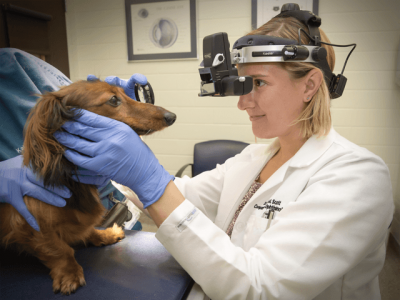
Dr. Erin Scott and her colleagues produced a therapeutic derived from turmeric to treat ocular inflammation in dogs. Image credit: Texas A&M College of Veterinary Medicine & Biomedical Sciences
Researchers at Texas A&M University have produced a therapeutic derived from turmeric, a spice long-praised for its natural anti-inflammatory properties, that shows promise in decreasing ocular inflammation in dogs suffering from uveitis, an inflammation of the eye that leads to pain and reduced vision.
Uveitis — a common condition in dogs, humans, and other species — can have many causes, often occurring secondary to infectious diseases cancer, and autoimmune diseases; it also is found in patients with longstanding cataracts and after operations correcting cataracts.
Scott and her colleagues’ research implemented a novel formulation of curcumin that improved transport of the substance across both intestinal and ocular barriers. By adding nanoparticle molecules that interact with receptors on a ubiquitous transmembrane carrier protein, known as the transferrin receptor, curcumin is able to hitch a ride across crucial barriers, improving absorption of the substance and reducing ocular inflammation.